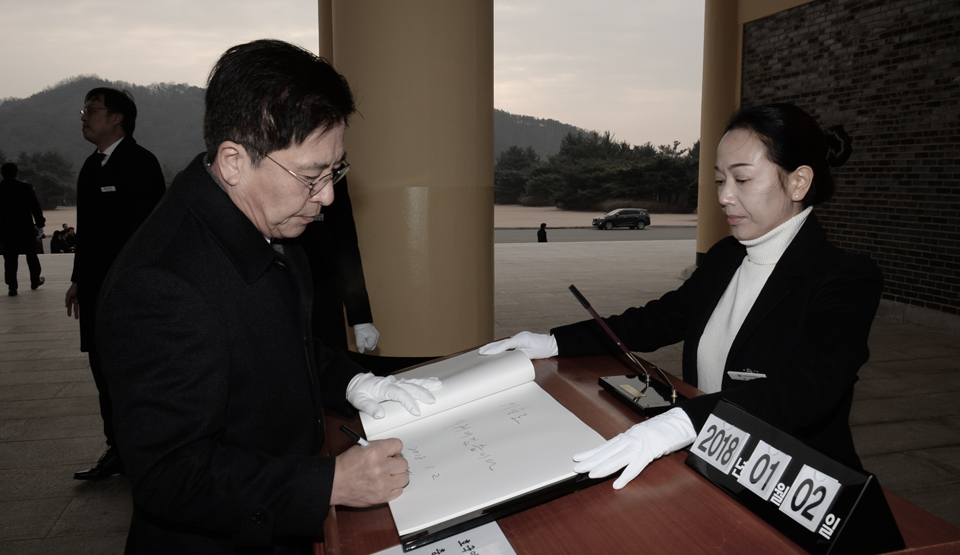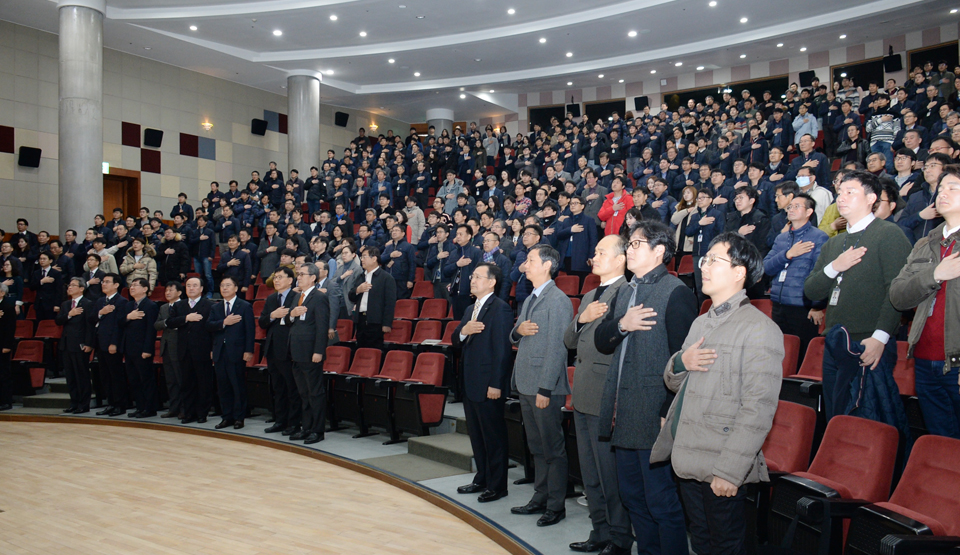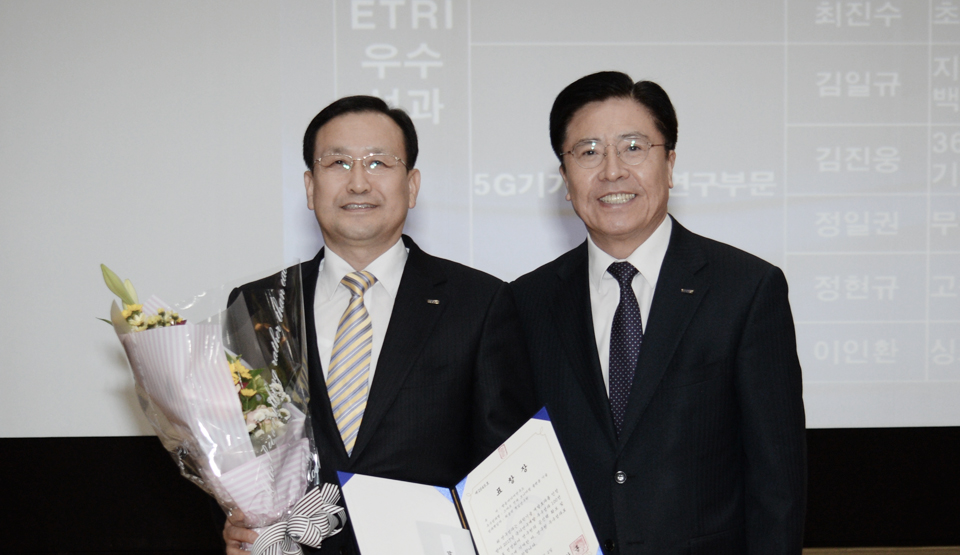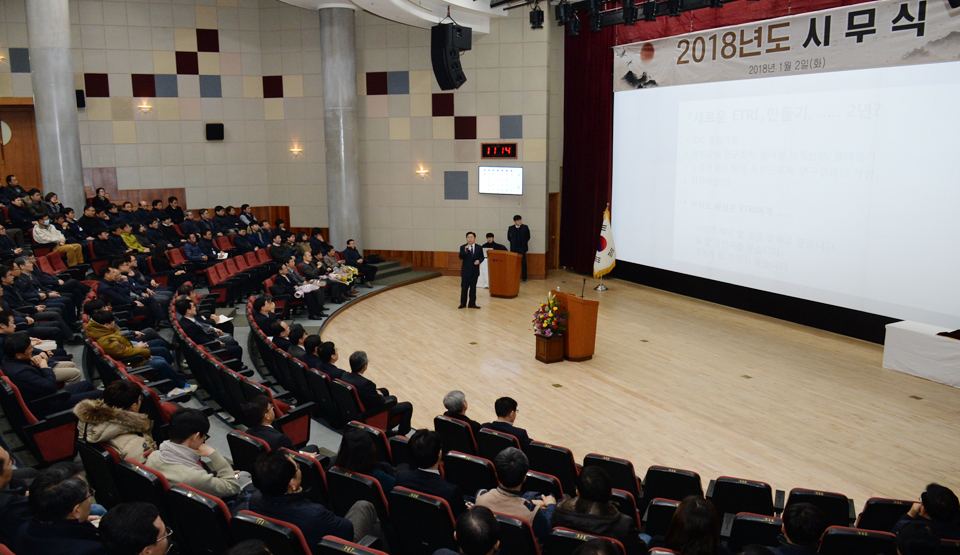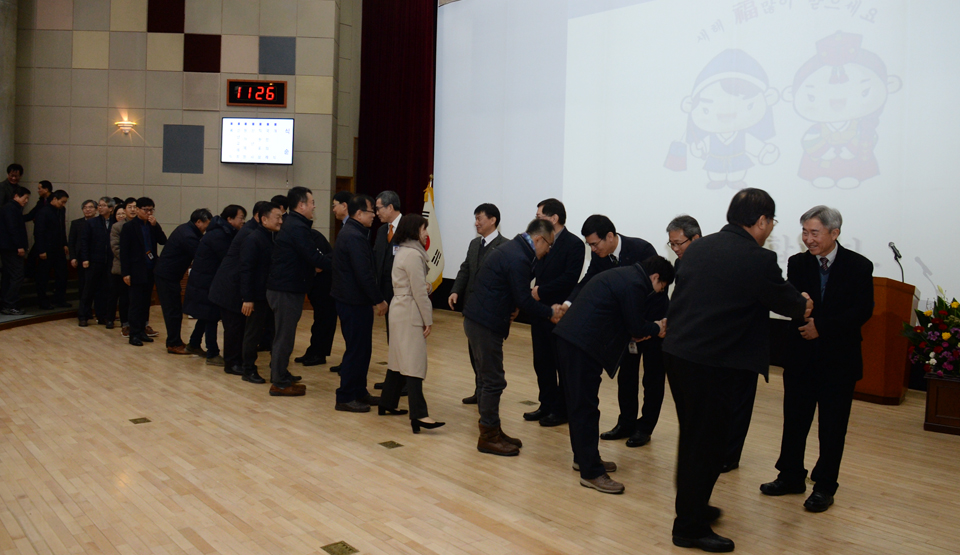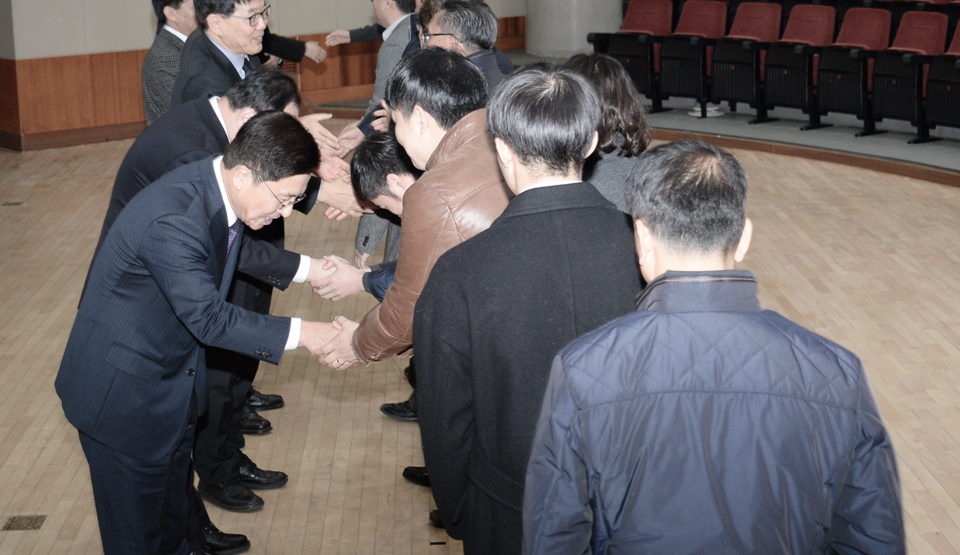Headline News
01
ETRI MHN - Meet Giga Wi-Fi
in Subways in Seoul

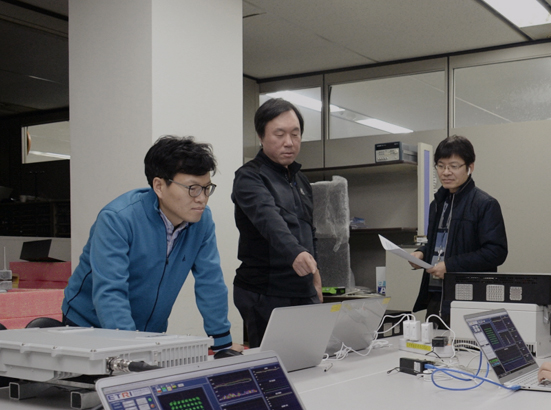

Passengers will soon be able to use 1 Gbps wireless internet service in the subway trains in Seoul. The Wi-Fi service will enable a maximum of 550 users to watch a video simultaneously at a transmission speed about 100 times faster than now.
On January 4 ETRI announced that the mobile hotspot network (MHN) technology had passed the final benchmark test (BMT) carried out in an interval covering five subway stations of Seoul's subway line No. 8 and the MHN service will be provided to the entire subway network in Seoul, beginning from the line No. 8. The MHN technology is a next-generation mobile communication technology employing a broadband frequency spectrum of millimeter waves to Gbps data service in a high-speed moving environment. The MHN technology realizes a transmission speed of 1 Gbps, which is 100 times faster than the present speed (10 Mbps).
02
ETRI Develops Transmission and Reception Parts for
Complete Prevention of Hacking

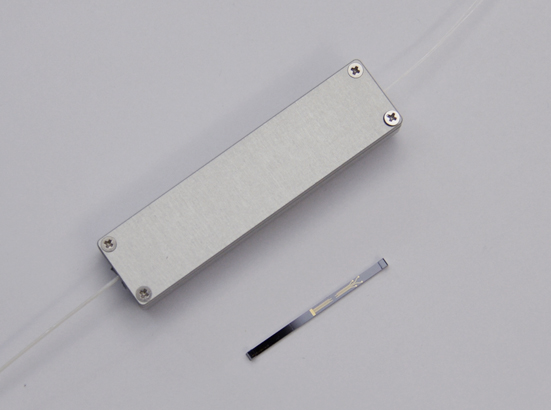
ETRI recently announced that it has firstly developed the core transmission and reception part technology for mobile quantum cryptographic communication.
The core transmission and reception parts that a research team of ETRI developed are necessary for the wireless transmission of encryption keys in quantum cryptographic communication. While bulk optical parts requiring an area of several square meters have been used conventionally, a new integration method was applied to scale down the parts to a size of several centimeters, which is about 1/100th of the conventional size.
ETRI plans to focus on further miniaturization of the modules and improvement of the quantum encryption key generation rate and the transmission distance. A researcher from ETRI stated that this new technology will allow the transmission and reception of sensitive information through quantum cryptographic communication that perfectly guarantees security in the new IoT era when various devices are connected to the communication network, including intra-vehicle and inter-vehicle security communication devices and mobile terminals.
03
ETRI Develops Biocompatible and
Flexible Nerve Electrode
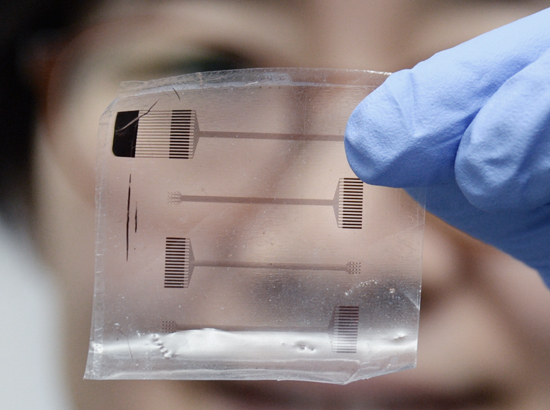

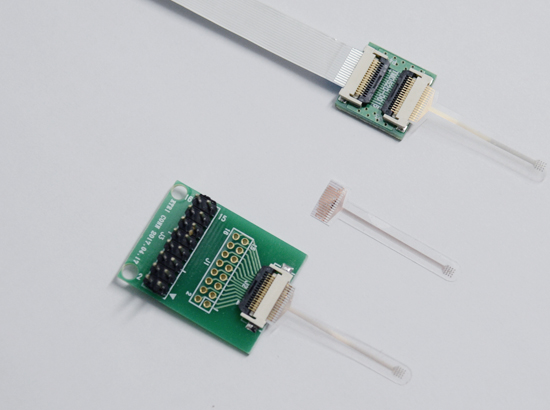

ETRI recently announced that it has successfully developed a nerve electrode made of only biocompatible gold (Au) and fluorine-based polymer materials that have excellent chemical durability with no water absorptivity and permeability. The newly developed nerve electrode includes no elements that may be chemically eroded and thus has long-term stability in a body fluid consisting of various components. Therefore, the nerve electrode can be used to detect brain nerve signals stably and stimulate nerve tissues continuously.
ETRI expects that this nerve electrode may be applied to implanted blood glucose sensors, wearable and flexible sensors, neural prosthetics for the disabled with dismemberment, brain function recovery equipment for patients with brain disease, and chemical sensors needed in extreme environments. In addition, the chemical durability of the nerve electrode allows for applications to patients with limb dismemberment or patients using a retinal prosthesis.
04
ETRI Verifies Technological Excellence of Communication Payload
on Chollian Satellite
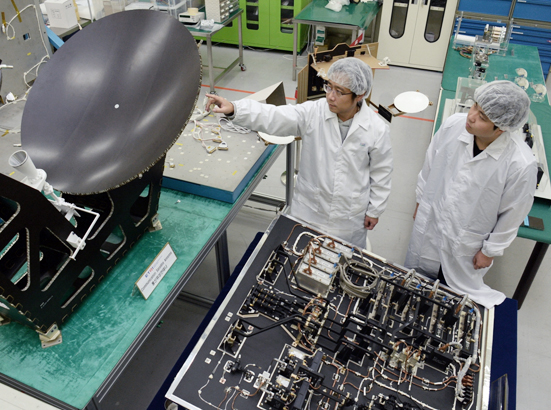
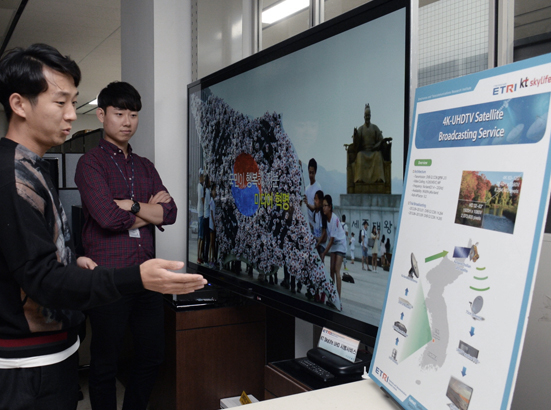
The Chollian Satellite No. 1 for communication and marine and meteorological observation was the first satellite developed independently by South Korea's own technology and launched to space in June 2010. Since then the Chollian Satellite No. 1 has significantly contributed to the citizens by continuously carrying out its duty for seven years in communication and in the transmission of marine and meteorological information.
ETRI recently announced that it has developed a communication payload for Chollian Satellite, corresponding to the brain of the satellite, and verified the technological excellence according to the global standards in the performance related to satellite control.
The ETRI research team has carried out public satellite communication services, satellite signal measurement, ground terminal testing, and satellite control in the last seven years. The communication payload developed by ETRI has Ka frequency bandwidth corresponding to 20 to 30 GHz.
05
ETRI Wins MSIT Prize
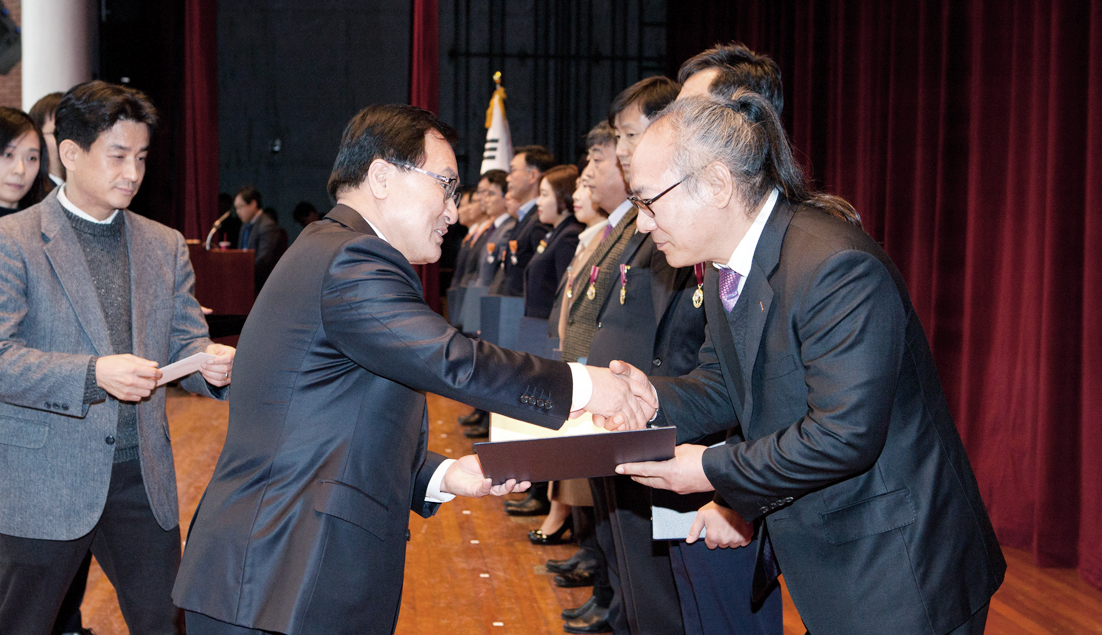
Lee Soon Seok, the executive director of the Communication Strategy Department of ETRI, won the MSIT prize awarded by You Young Min, the Minister of MSIT, at the kick-off meeting for the new year held on January 2 (Tue) at MSIT. He received the honor for the excellent communication case in the category of 'Various Methods of Policy Communication with Mass Media and Citizens in 2017.'
ETRI was recognized for its contribution to science culture communication by supporting national economic growth with research accomplishments in ICT and improving the citizens' understanding of ICT through various methods of communication, including a webzine, so that the nation’s citizens may feel close to science with more scientific knowledge.
06
MSIT·NST Seminar at Innopolis for Development of
Government-Funded Research Institutes
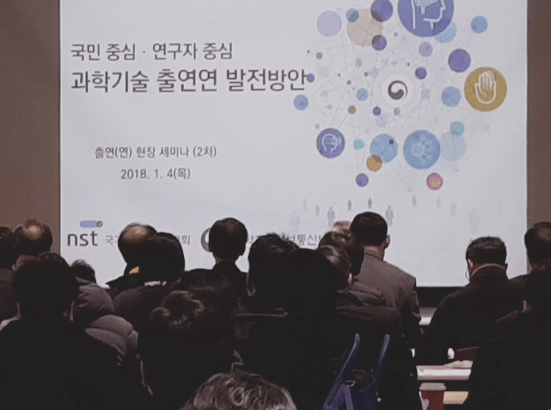
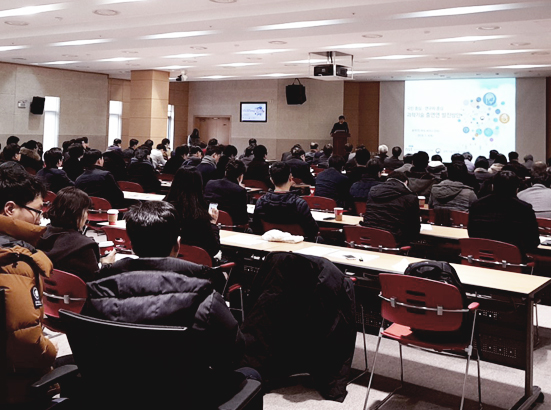
The MSIT (Minister You Young Min) and the NST (Chief Director Wohn Kwangyun) held an on-site seminar at ETRI's Convergence Technology Commercialization Center on January 4 to explain the methods of developing government-funded research institutes
that were recently planned to be established.
The vision of the development method and the goals of institute establishment are to make the government-funded research institutes the nation's core research institutes focusing on the research projects that must be carried out and the research institutes truly competent in research work.
With these goals, the MSIT and the NST proposed six major promotion tasks: the extension of the roles and responsibilities of government-funded research institutes, the operation of an organization concentrated on research work, the advancement of research administration and research culture, the development of government-funded research institutes led by on-site workers, and the establishment of a system for direct research accomplishment evaluation by the government and the field of science and technology.
07
ETRI Develops Technology for Manufacturing
2D Semiconductor Nano-Sheet
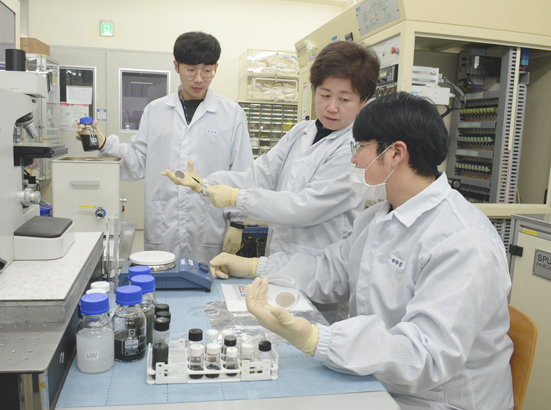

ETRI announced on January 9 that it has developed an essential technology for manufacturing a two-dimensional semiconductor nano-sheet, which is a novel ultra-thin material having a nanometer thickness.
The research team prepared a water dispersion where the nano-sheet material is homogeneously dispersed in water. The 2D semiconductor nano-sheet water dispersion may be mixed with a water-soluble polymer to prepare a nano-sheet-polymer composite.
This technology opens the way for mass production of flexible memory devices or sensors via a low-cost solution process by adding a power-type water-soluble polymer to the water dispersion to prepare a highly viscous solution which is then thinly coated on a semiconductor substrate to produce a semiconductor layer for memory devices.




















